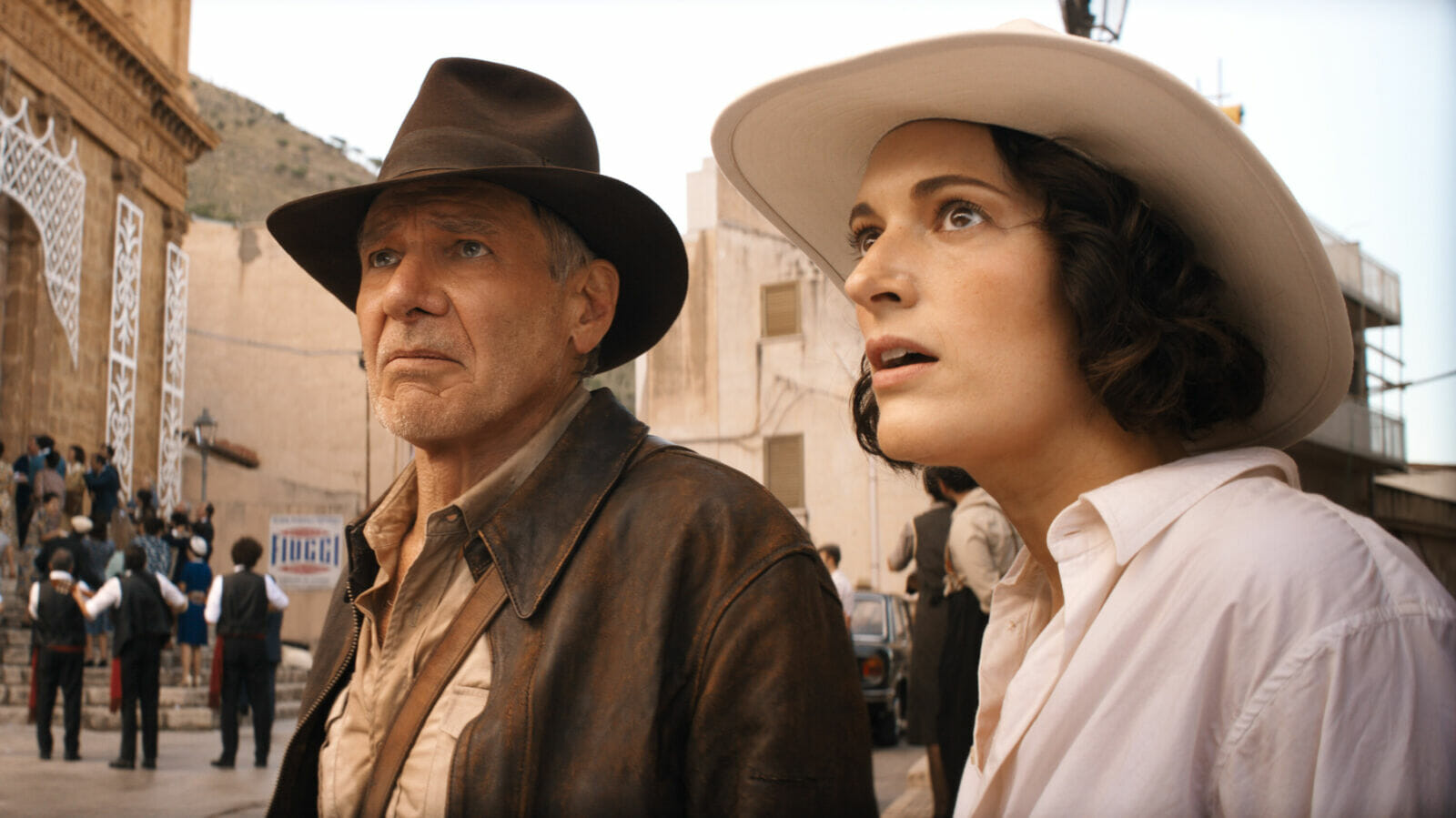Indiana Jones knows how to set a tone. Raiders opens with one of the most cleverly conceived set pieces in adventure film history, birthing an icon in an instant, and Doom and Crusade announce their tonal spins just as quickly, one going pulpier and sultrier (and more racist) within the first ten minutes, the other swinging cheesy crowd-pleasy with its prefatory origin story. Crystal Skull, infamously, opens on a CGI gopher—a portent of things to come—but it’s vindicated in comparison to The Dial of Destiny, whose first impression is virtually a warning sign.
READ ALSO: Read all of Ryan Bordow’s movie reviews here
DEEPER DIVE: Here’s how Arizona film incentives could attract filmmakers
We open on a flashback to 1944, six years after the supposed Last Crusade. Indy, on board a speeding train, has (again) been captured by Nazis, and what’s worse, he’s been uncannily de-aged into empty nostalgia nightmare fuel. CGI Harrison Ford (debuting here before his cameo in the ninth entry) doesn’t make a great protagonist—his eyes are soulless, his mouth mismatched—but his aesthetic ugliness fits the scene’s action, a string of murky night fights lit for minimal legibility. Even at his previous worst, Jones had never looked this drab. The tone’s been set.
After presenting the McGuffin—Archimedes’ dial, a device that can locate “fissures in time”—the film ticks forward to ‘69, when Jones isn’t doing so nice. Unlike Crystal Skull, which had old Indy in his hat and back in action by minute five, Dial of Destiny starts with him hatless, shirtless, and asleep in a chair. It’s a familiar but fertile direction for a legacyquel—a hero wracked with age—and the camera leans into it, gazing on Jones’ body like he belongs in a museum. Maybe this is the hook that makes Destiny distinct, something it desperately needs—five movies into a classic 80s franchise can be a dangerous narrative dead zone. Just ask Terminator Genisys.
But where that bent its timeline backward to layer over its samey beats, The Dial of Destiny just shambles through the motions. We get a bit more emphasis on elderly Indy—he’s retiring from teaching!—and then it’s off to the races like he never aged a day (barring an evident shortage of stuntwork from Ford). The story, so eager to speed down the roads most traveled, builds with charmless, workmanlike efficiency: here’s a figure from Indy’s past who’s after the McGuffin, here’s a Nazi who’d use the thing for evil, here’s the first location on your global goose chase. Indy’s new partner, his goddaughter Helena (Phoebe Waller-Bridge), is a chipper Old Hollywood type, but she fails to strike up chemistry or even a fun dynamic with Jones—she just repeats the cycle of “I’m in it for myself!” and “Nazi rule would be bad for me, so I guess I’ll help out (but maybe I actually care)” until the plot is busy enough to drop the pretense of her arc. Her middling one-liners, snarky and modern, don’t fill the void.
The general vibe is off too: Archimedes’ dial, based loosely on the Antikythera mechanism (“the world’s first analog computer”), is a scientific device, a map to purely natural space-time phenomena. It lacks the spiritual and cosmic import of the series’ other treasures—that key element that made the stories moral tales. Jones isn’t just a swashbuckling academic; he’s the one with the discipline to shut his eyes at the Ark, the one with the humility to choose the right cup. Despite its fatalist title, The Dial of Destiny paints on no such greater canvas. Metaphysically, the film is an open-and-shut case, far thinner than the wonder of its transcendental forebears.
Without religious fervor, rich characters, or a thrilling central conceit, the film struggles to elicit a genuine response. In a telling scene, a grieving Jones begs for a moment to let a loss sink in, only for Helena to cheer him up with “But have you considered we’re closer to the dial?”, at which point everyone, Indy included, snaps back to chugging the plot along. The film would show its hollow heart if it ever stopped moving.
But even in motion, it’s less than impressive. Of the handful of diverting set pieces, some are too reliant on CGI, and others take uninspired shortcuts to once-great ideas. Before Indy plunges down steep stairs in a motorized rickshaw (typical Tangier activity), the camera shoots the drop from a precariously high angle—the promising crest of a roller coaster—but the descent consists of shaky, bumpy close-ups of the carriage and the stairs, which zaps the sequence of sensation. And the violence—so pulpy and nasty in Spielberg’s hands—is sanitized and stale here, miles from the guilty pleasures that provoked the new PG-13 rating post-Temple of Doom. It’s all clean, instant, out-of-focus headshots, epitomizing the film’s core flaw: there’s no lifeblood coursing through.
By the third act, I was itching for the weirder touches of Crystal Skull—vine-swinging with monkeys and hordes of giant ants are better than half of Dial’s ideas. Thankfully, the climax is pretty out-there, finally shocking the film to life—but it still lacks that quintessential magic. Despite the hate for Skull’s extraterrestrials (even from Skull’s own screenwriter), I’ll never forget the alien glaring into the camera as it incinerates the villain with knowledge. Those wild little flourishes are missing here. Dial is an adventure film, but it’s not an adventurous one.
Instead, it’s every modern blockbuster woe transposed onto a once-classic name. It’s no surprise when the denouement pulls a cameo out of nowhere to grasp at a connection—the film barely lays the groundwork for a self-standing story. What’s left is forced, flaccid drudgery. I know Jones is getting old, but I’d rather it die than just lie there.
★½ (1.5/5)




